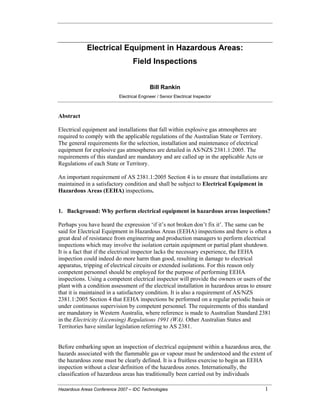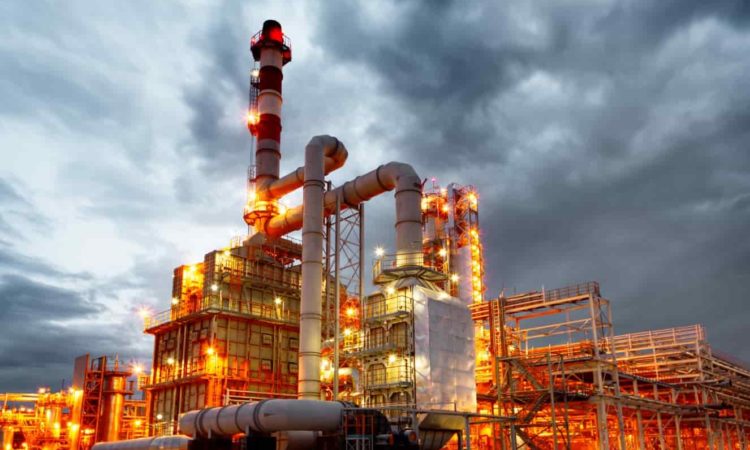Our Roar Solutions Diaries
Our Roar Solutions Diaries
Blog Article
The Roar Solutions PDFs
Table of ContentsThe Greatest Guide To Roar SolutionsSome Ideas on Roar Solutions You Should KnowThe Ultimate Guide To Roar Solutions
In such an environment a fire or explosion is feasible when three basic problems are satisfied. This is often described as the "hazardous area" or "burning" triangular. In order to safeguard installments from a potential surge a method of evaluating and identifying a potentially dangerous area is called for. The purpose of this is to make certain the proper option and installment of tools to eventually stop an explosion and to make sure safety of life.
(https://www.avitop.com/cs/members/roarsolutions.aspx)
No tools must be mounted where the surface area temperature of the devices is higher than the ignition temperature level of the given hazard. Below are some typical dirt harmful and their minimal ignition temperature level. Coal Dust 380C 225C Polythene 420C (melts) Methyl Cellulose 420C 320C Starch 460C 435C Flour 490C 340C Sugar 490C 460C Grain Dirt 510C 300C Phenolic Material 530C > 450C Aluminium 590C > 450C PVC 700C > 450C Soot 810C 570C The chance of the danger existing in a concentration high sufficient to create an ignition will certainly vary from location to location.
In order to categorize this risk an installment is divided into areas of threat relying on the quantity of time the hazardous exists. These areas are described as Areas. For gases and vapours and dusts and fibers there are three zones. Zone 0 Zone 20 A hazardous environment is highly most likely to be existing and might be existing for extended periods of time (> 1000 hours annually) or also continually Area 1 Area 21 A harmful environment is possible but not likely to be present for extended periods of time (> 10 450 C [842 F] A classification of T6 means the minimum ignition temperature is > 85 C [185 F] Dangerous area electrical tools maybe made for usage in greater ambient temperature levels. This would suggested on the score plate e.g. EExe II C T3 Ta + 60C( This means at 60C ambient T3 will not be surpassed) T1 T1, T2, T3, T4, T5, T6 T2 T2, T3, T4, T5, T6 T3 T3, T4, T5, T6 T4 T4, T5, T6 T5 T5, T6 T6 T6 A T Course ranking of T1 indicates the maximum surface area temperature level generated by the tool at 40 C is 450 C. Presuming the linked T Class and Temperature ranking for the tools are proper for the location, you can constantly make use of a tool with a more strict Division ranking than needed for the area. There isn't a clear response to this concern. It truly does depend on the kind of tools and what repair work need to be executed. Equipment with details test treatments that can not be performed in the area in order to achieve/maintain 3rd party score. Have to return to the manufacturing facility if it is prior to the equipment's solution. Area Repair By Authorised Personnel: Complex testing might not be required nevertheless specific procedures may need to be followed in order for the tools to keep its 3rd party score. Authorised personnel should be employed to carry out the work appropriately Repair service must be a like for like replacement. New part need to be taken into consideration as a straight substitute needing no unique testing of the tools after the repair service is total. Each tool with you could look here a harmful ranking should be examined independently. These are outlined at a high level listed below, however, for even more detailed information, please refer straight to the standards.
9 Simple Techniques For Roar Solutions
The devices register is a detailed database of tools records that consists of a minimum collection of areas to determine each item's location, technical parameters, Ex category, age, and ecological data. The proportion of Thorough to Close inspections will certainly be established by the Tools Risk, which is analyzed based on ignition danger (the probability of a resource of ignition versus the chance of a combustible atmosphere )and the hazardous location classification
( Zone 0Area 1, or 2). Implementing a robust Risk-Based Examination( RBI )method is crucial for making certain compliance and safety in managing Electric Equipment in Hazardous Areas( EEHA).
Excitement About Roar Solutions

In terms of explosive risk, a harmful location is an environment in which an explosive ambience exists (or might be anticipated to be present) in quantities that require special safety measures for the construction, setup and usage of tools. hazardous area course. In this write-up we explore the difficulties faced in the workplace, the threat control procedures, and the required proficiencies to function securely
It is a repercussion of modern life that we make, save or handle a variety of gases or fluids that are deemed combustible, and a variety of dirts that are regarded flammable. These materials can, in specific conditions, develop eruptive atmospheres and these can have major and heartbreaking effects. A lot of us recognize with the fire triangle get rid of any type of among the three elements and the fire can not happen, yet what does this mean in the context of hazardous areas? When breaking this down into its most basic terms it is basically: a combination of a certain quantity of launch or leak of a particular compound or product, blending with ambient oxygen, and the presence of a source of ignition.
In most circumstances, we can do little concerning the degrees of oxygen in the air, yet we can have significant influence on resources of ignition, as an example electrical devices. Unsafe locations are documented on the harmful location category drawing and are determined on-site by the triangular "EX" indication. Right here, amongst other crucial details, zones are divided into 3 types relying on the threat, the probability and duration that an eruptive environment will exist; Zone 0 or 20 is considered one of the most unsafe and Zone 2 or 22 is deemed the least.
Report this page